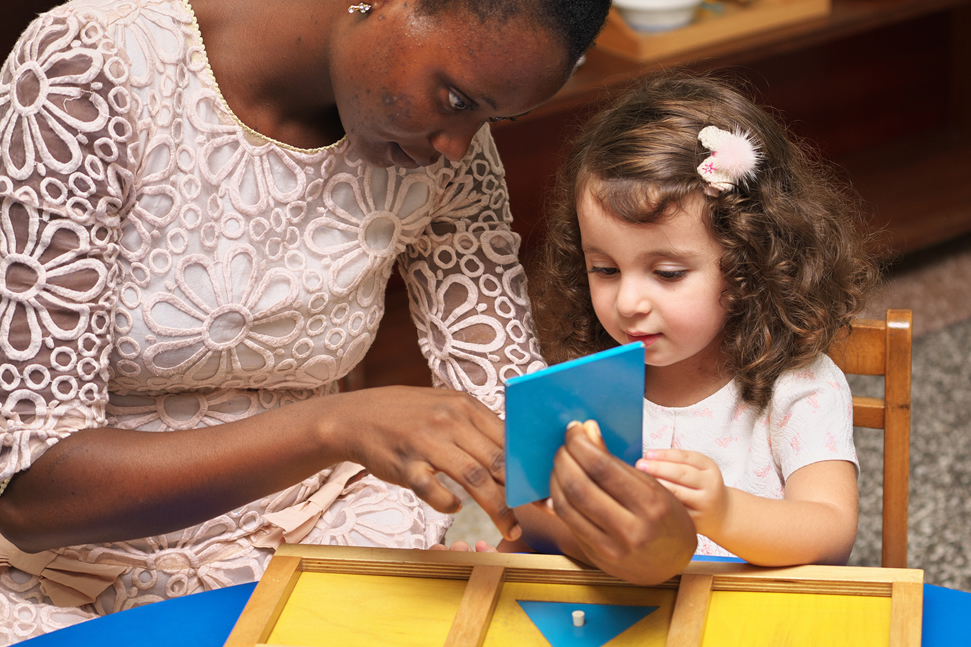The purpose of the Sensorial activities is to help the child to sort out in an orderly manner the many varied impressions received every day. The specifically designed materials used in this area help the child to develop discrimination, order, and to broaden and refine all senses.
It is one of the most important areas as it allows the child to lose her self in a specific task, by manipulation the materials with her own hand, by consequence helping the child to develop the mental stamina and skill involved in concentrating over time.
The purpose of the Constructive Triangles is to allow the child to explore and experiment with form and geometry. They are “constructive” because the triangles are used to form other figures. Eventually, the child comes to the realization of how new shapes and figures can be formed using only varying triangles and come appreciate the relationship between figures. Later, in the Elementary years, combinations of Constructive Triangle boxes are utilized to demonstrate the Pythagorean Theorem.e
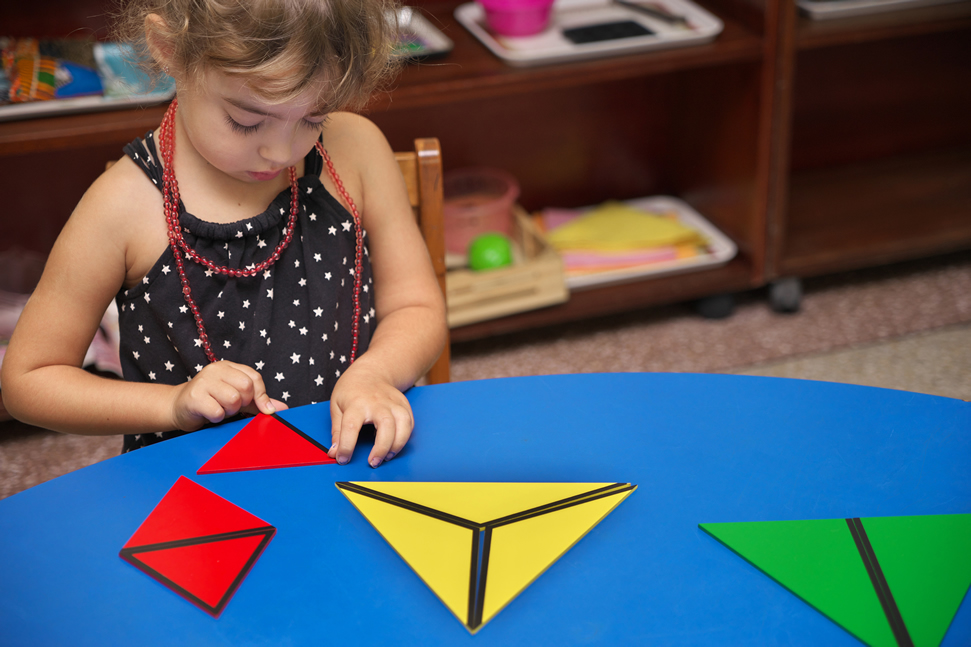
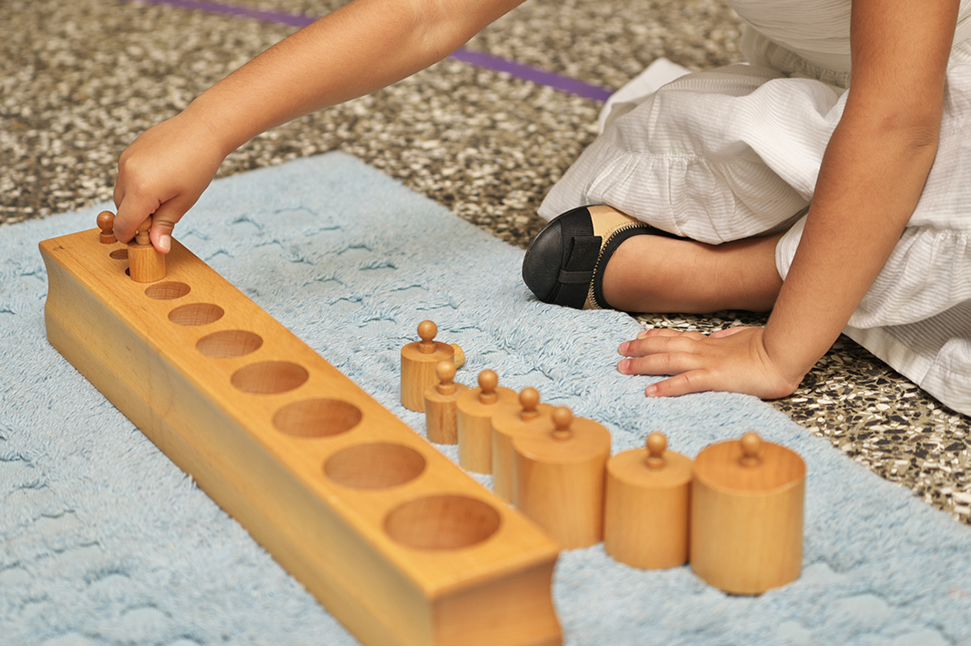
Ten solid wooden cubes varying in size from 1 cubic centimeter to 1 cubic decimeter. These are pale pink . A strong pink must not be used. If it is used, children are more aware of color than of size
PURPOSE:
There are 10 cubes because 10 is the basis of our number systemb) The largest cube would hold 1 liter, the smallest 1 cubic centimeterc) Preparation for cube rootEight of the smallest make the second cube (23). Twenty-seven of the smallest make the third cube (33).Sixty-four of the smallest cube make the fourth cube (43),etc.One thousand of the smallest cube make the tenth cube (103).
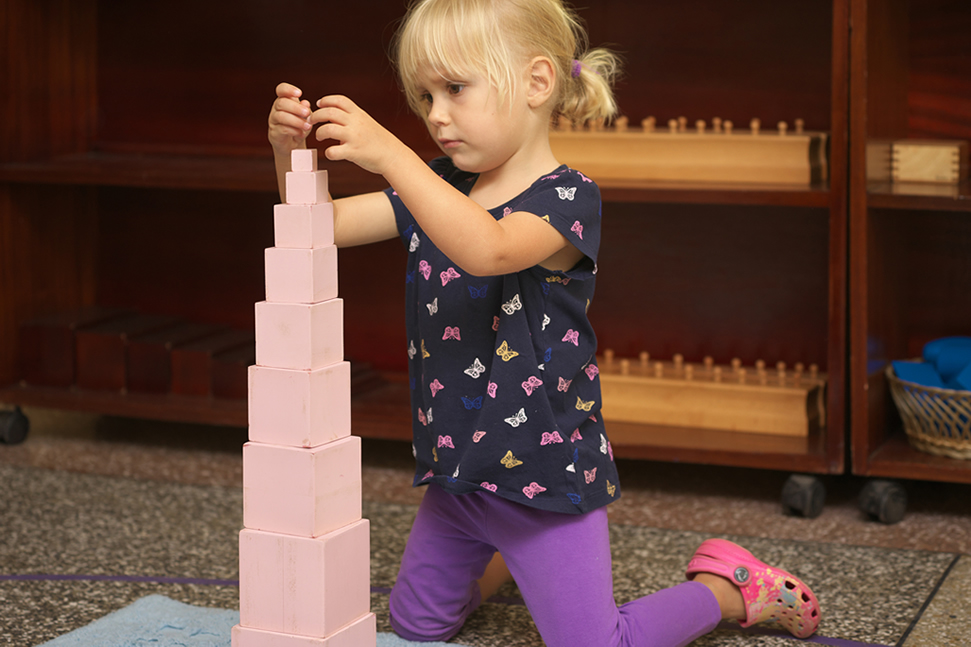
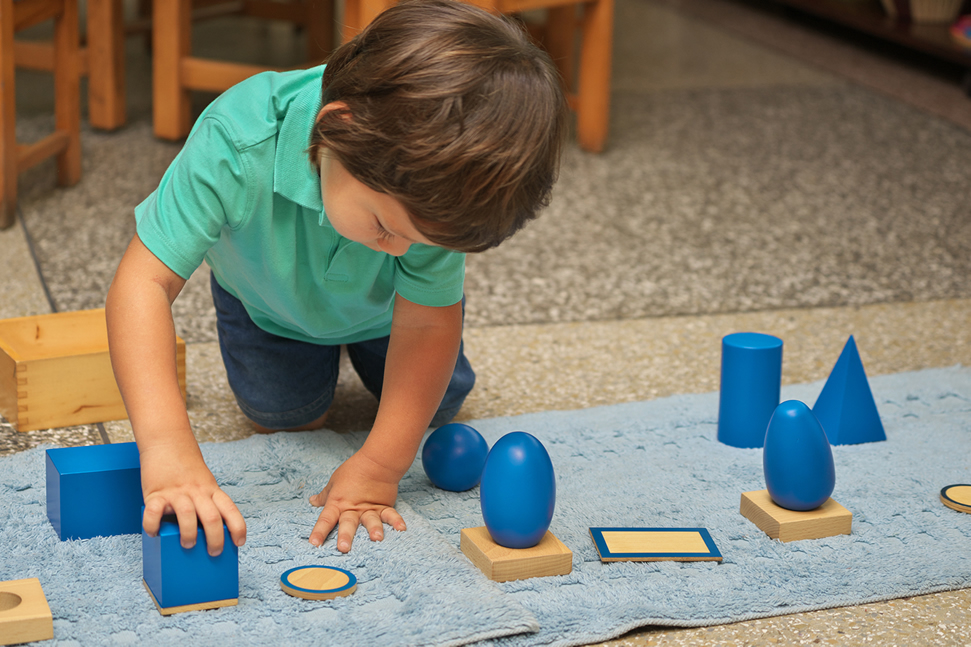
Material Description:
A wooden cabinet with six drawers and one demonstration tray, each painted blue inside and containing six wooden squares. Most of the squares have a figure cut out with a knob in the centre to hold them by. When the cut out is lifted, the blue background shows the shape of the cut-out
Demonstration Tray: equilateral triangle, circle and square
Drawer 1: six circles, varying from ten to five centimetres
Drawer 2: six rectangles, varying from 10×10 to 10×5 centimetres
Drawer 3: six triangles of different types
Drawer 4: six regular polygons, varying from a pentagon to a decagon
Drawer 5: four curvilinear forms, an oval, ellipse, curvilinear triangle and a quatrefoil
Drawer 6: four rectilinear forms, a rhombus, parallelogram, right trapezoid and isosceles trapezoid
Three sets of cards for each figure: one with the complete shape filled, one with a thick outline and one with a thin outline
